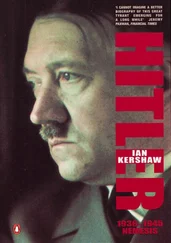79. BA/MA, RM7/854, fo. 13, for Dönitz’s order for the capitulation of the city, issued the previous day, 2 May.
80. BA/MA, RM7/854, fos. 33, 36, reports of Kdr. Adm. Deutsche Bucht, 4.5.45. Serious disintegration within the 3rd Panzer Army in Mecklenburg had already been reported on 27 April by General Hasso von Manteuffel, who spoke of scenes which he had not even seen in 1918.— 1945: Das Jahr der endgültigen Niederlage der faschistischen Wehrmacht , pp. 343–4; DRZW , 10/1 (Lakowski), p. 655.
81. Die Niederlage 1945 , p. 429 (5.5.45); BA/MA, RM7/854, fo. 24, for the earlier confirmation order of 3.5.45 to scuttle ships. A directive had already been issued on 30 April that ‘in the event of an unforeseen development of the situation’ on the codeword ‘Rainbow’, all ships, including U-boats, were immediately to be sunk. The demand to hand over all weapons, including U-boats, was seen by Keitel and Jodl as incompatible with German honour. Dönitz accepted the demand only with extreme reluctance. Some 185 U-boats were, in fact, scuttled by their commanders with the Dönitz administration turning a blind eye, before the order to hand them over could take effect.— KTB/SKL , part A, vol. 68, p. 421A, Funksprüche der Skl., 3.5.45; Lutz Graf Schwerin von Krosigk, ‘Persönliche Erinnerungen’, part 2: ‘25 Jahre Berlin 1920 bis 1945’, unpublished typescript, n.d., p. 324; DRZW , 10/1 (Rahn), pp. 166–7.
82. DZW , 6, p. 742. This figure includes SS and OT members. Howard D. Grier, Hitler, Dönitz and the Baltic Sea: The Third Reich’s Last Hope, 1944–1945 , Annapolis, Md., 2007, p. 218, has a Wehrmacht strength of 350,000 troops.
83. Die Niederlage 1945 , pp. 423 (3.5.45), 426–7 (4.5.45), 430 (5.5.45); DRZW , 10/1 (Zimmermann), pp. 472–4; DZW , 6, pp. 773–4; Albert Speer, Erinnerungen , Frankfurt am Main and Berlin, 1969, pp. 496–7; Schwendemann, pp. 18–19.
84. BA/MA, RM7/854, fo. 117, Chef OKW, 6.5.45.
85. Die Niederlage 1945 , p. 425 (3.5.45).
86. Die Niederlage 1945 , p. 432 (6.5.45); DRZW , 10/1 (Zimmermann), pp. 474–5; DZW , 6, p. 758; Müller and Ueberschär, pp. 102–3; Schwendemann, p. 23.
87. BA/MA, RM7/854, fo. 71, Keitel telegraph, 5.5.45.
88. BA/MA, RM7/854, fo. 48, FS Chef SKL, 4.5.45.
89. According to the OKW’s calculations, 1,850,000 soldiers belonged to the army in the east on 7 May 1945.— DRZW , 10/1 (Lakowski), p. 675.
90. DZW , 6, pp. 745, 761, 763; Schwendemann, p. 24, for the figures given above, representing the OKW’s estimates on 8 May. According to DRZW , 10/1 (Lakowski), p. 674, the size of Army Group Centre was estimated at between 600,000 and 650,000 men on 7 May.
91. DZW , 6, p. 740; Müller and Ueberschär, p. 108. On Hela, the commander reported on 3 May that, short of men and weapons, the troops there were facing ‘certain destruction’.—BA/MA, RW44I/33, fo. 26, KR Blitz von General der Panzertruppe, AOK Ostpreußen an Obkdo. d. WMFStOber (H) Nordost, 3.5.45. There were some 150,000 soldiers and 50,000 refugees on Hela at the time.—Schwendemann, p. 23.
92. BA/MA, RW44I/86, fo. 5, Bev. Gen. Kurland, gez. Möller, Brigadeführer, an Dönitz, 5.5.45.
93. Die Niederlage 1945 , pp. 426–7 (4.5.45).
94. DZW , 6, p. 758; Rendulic´, pp. 378–81; Schwendemann, pp. 25–6.
95. Die Niederlage 1945 , p. 429 (5.5.45). Löhr’s request to be allowed to offer Field-Marshal Alexander his cooperation in an attempt to ‘prevent the total Bolshevization of Austria’ is printed in KTB/SKL , part A. vol. 68, p. 439A.
96. Die Niederlage 1945 , p. 430 (6.5.45); Schwendemann, p. 20.
97. Die Niederlage 1945 , p. 425 (3.5.45).
98. DZW , 6, p. 761; Die Niederlage 1945 , pp. 427–8 (4.5.45).
99. Die Niederlage 1945 , p. 422 (2.5.45).
100. Die Niederlage 1945 , p. 423 (3.5.45).
101. Die Niederlage 1945 , p. 431 (6.5.45).
102. DZW , 6, pp. 758–67; Müller and Ueberschär, p. 104.
103. Die Niederlage 1945 , pp. 430–31 (6.5.45).
104. Die Niederlage 1945 , pp. 432–3 (7.5.45). Eisenhower had given Jodl half an hour to reach a decision, but communications difficulties with Flensburg delayed the arrival of his message and receipt of Dönitz’s approval.— DZW , 6, p. 774. See also Bodo Scheurig, Alfred Jodl: Gehorsam und Verhängnis , Berlin and Frankfurt am Main, 1991, pp. 331–3.
105. Reproduced in facsimile in Müller and Ueberschär, pp. 178–9. Britain had introduced ‘double summer time’ during the Second World War. This placed Britain one hour ahead of Central European Time.
106. Müller and Ueberschär, pp. 106, 180–81; Schwendemann, p. 30; Baum, p. 261. For a description of the scene, see G. Zhukov, Reminiscences and Reflections , vol. 2, Moscow, 1985, pp. 399–400; also Antony Beevor, Berlin: The Downfall 1945 , pb. edn., London, 2007, pp. 403–5.
107. Speer, pp. 498–9.
108. IWM, EDS, F.3, M.I. 14/284 (A), report on a discussion between Keitel and General Ivan Aleksandrovich Serov, deputy commissar of the NKVD (the Soviet internal security organization, headed by Lavrenty Beria); printed in KTB/SKL , part A, vol. 68, pp. 469–71A. Authentication of part of a jawbone which the Soviets had found in the garden of the Reich Chancellery as belonging to Hitler was only made a few days later. Stalin and the Soviet authorities continued for years to disbelieve accounts of Hitler’s death.
109. BA/MA, RM7/854, fo. 120, Kriegstagebuch Seekriegsleitung, 7.5.45; KTB/OKW , vol. 4/2, pp. 1482–3 (7.5.45); Schwendemann, p. 25.
110. Schwendemann, p. 26.
111. Klaus Granzow, Tagebuch eines Hitlerjungen 1943–1945 , Bremen, 1965, p. 177 (5.5.45).
112. BA/MA, NL Schörner, N60/18, unfoliated, proclamation by Schörner to soldiers of Army Group Centre, 5.5.45.
113. Die Niederlage 1945 , p. 431.
114. Schwendemann, p. 25.
115. DZW , 6, p. 767.
116. BA/MA, RW44I/54, unfoliated 4pp. ‘Aufzeichnung über die Dienstreise des Oberst i.G. Meyer-Detring zu Feldmarschall Schörner am 8.5.45 (p. 3: Unterredung mit Feldmarschall Schörner); Die Niederlage 1945 , p. 438, for Meyer-Detring’s report to Dönitz.
117. BA/MA, NL Schörner, N60/18, unfoliated, proclamation by Schörner to soldiers of Army Group Centre, 5.5.45; printed in Roland Kaltenegger, Schörner: Feldmarschall der letzten Stunde , Munich and Berlin, 1994, pp. 297–8.
118. In a case that raised great public interest, with much support for Schörner as well as heated criticism of his actions, the former field-marshal was found guilty in October 1957 of condemning to death without a court, then the hanging, of a corporal said to have fallen asleep, drunk, at the wheel of his lorry in March 1945. He was sentenced to four and a half years imprisonment, of which he served two before being released on health grounds. The Federal Republic refused him a pension. He lived a secluded existence in Munich supported by friends and former military comrades, until his death in 1973 at the age of eighty-one.—Peter Steinkamp, ‘Generalfeldmarschall Ferdinand Schörner’, in Gerd R. Ueberschär (ed.), Hitlers militärische Elite , vol. 2: Von Kriegsbeginn bis zum Weltkriegsende , Darmstadt, 1998, pp. 240–42; Klaus Schönherr, ‘Ferdinand Schörner—Der idealtypische Nazi-General’, in Ronald Smelser and Enrico Syring (eds.), Die Militärelite des Dritten Reiches , Berlin, 1995, pp. 506–7. See also, for the controversy around Schörner’s trial, Kaltenegger, Schörner , pp. 330–54.
Читать дальше












